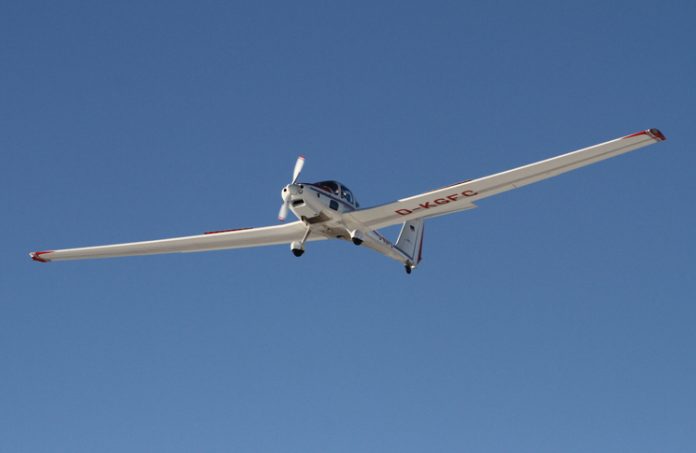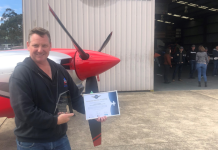
This senior instructor learns a valuable lesson after not actually checking what he was doing.
It was the first flight of the day and I was conducting a conversion onto the Grob 109 motor glider.
The student was an experienced PPL and glider pilot but was completely new to the motor glider type. The weather was great with clear skies and light wind. The student was well prepared so we started up, taxied out and took off, departing the airfield for some general handling.
Climbs, descents, turning and slow flying were all handled well. I started to relax when I was confident the student was capable and had good aircraft handling skills. We conducted some stalling at altitude in the training area, then proceeded to return to the airfield.
During the return I decided to show the student the Grob’s unusual propeller pitch change mechanism. The propeller has three fixed positions: fine pitch for take-off and landing, course pitch for cruise and feather for engine off/soaring mode.
The pitch change mechanism is quite unusual and requires the aircraft to be flown at the correct speed and RPM before the pitch change handle is pulled and then immediately released. Once this has been done, the pilot must check if the pitch has actually changed by increasing the power to see what RPM is achieved. The trick to a successful pitch change is getting the aircraft speed and RPM correct before pulling the handle.
To feather the prop, the engine must be shut down and the feathering handle (next to the pitch change handle) is pulled out and rotated 90°. This also applies a prop brake to prevent the prop from windmilling. All quite unusual but not too difficult.
By now we had descended to the circuit height of 1000 feet and we were about six miles from the field. The student was flying nicely so I chose to talk him through the pitch change exercise rather than show him myself.
He set the aircraft up at the correct speed and RPM and I instructed him to pull the pitch change handle fully out and release it. What he actually did was pull the feather handle fully out (activating the prop brake) and the engine promptly stopped!
We were now a bit low for comfort, with not many landing options and a dead engine. I tried to stay calm.
I immediately went through my normal in-air starting drill (since it was quite normal to shut down the engine in‑flight in this motor glider). Normal start was master switch ON, throttle set two centimetres open, feather handle released fully and turn the ignition key.
Unfortunately, in my hurried muscle memory routine to start, what I actually did was turn the master switch OFF instead of ON.
The engine didn’t crank! Panic started to set in.
My mind was racing. I tried the key again—still nothing. I trimmed for best glide speed and pointed towards the airfield, though I could tell from the angle we weren’t going to make it.
I slowed down my actions and carefully went through the start sequence. Pausing at the master switch, I realised my mistake—switched the master back ON, turned the key and the engine sprang back into life. We were down to 700 feet but were able to join the circuit and land uneventfully.
In those few seconds, I learnt two valuable lessons.
When conducting an action, actually check what you are doing is correct—don’t just rely on muscle memory. In this case I operated the master switch instead of checking I was switching it ON.
What you did and what you think you did can be different. When panic sets in, slow down and check your actions.
As an instructor, always be alert, regardless of how experienced the student is. I was lulled into a false sense of security since the student was flying very well and had a lot of flying experience. I assumed he would manage this exercise fine.
This was the first time he had ever used the pitch control so I should have monitored more closely that he was actually operating the correct control.
This incident was entirely preventable and was totally down to my mistakes.
As they told me on day one of my instructor’s course: ‘expect the unexpected’, at any time!





Interesting that the instructor chose to conduct a new part of the lesson at circuit height. I realise any lesson involving approach to landing must , at some time, be practised in the circuit, but a first time, why??